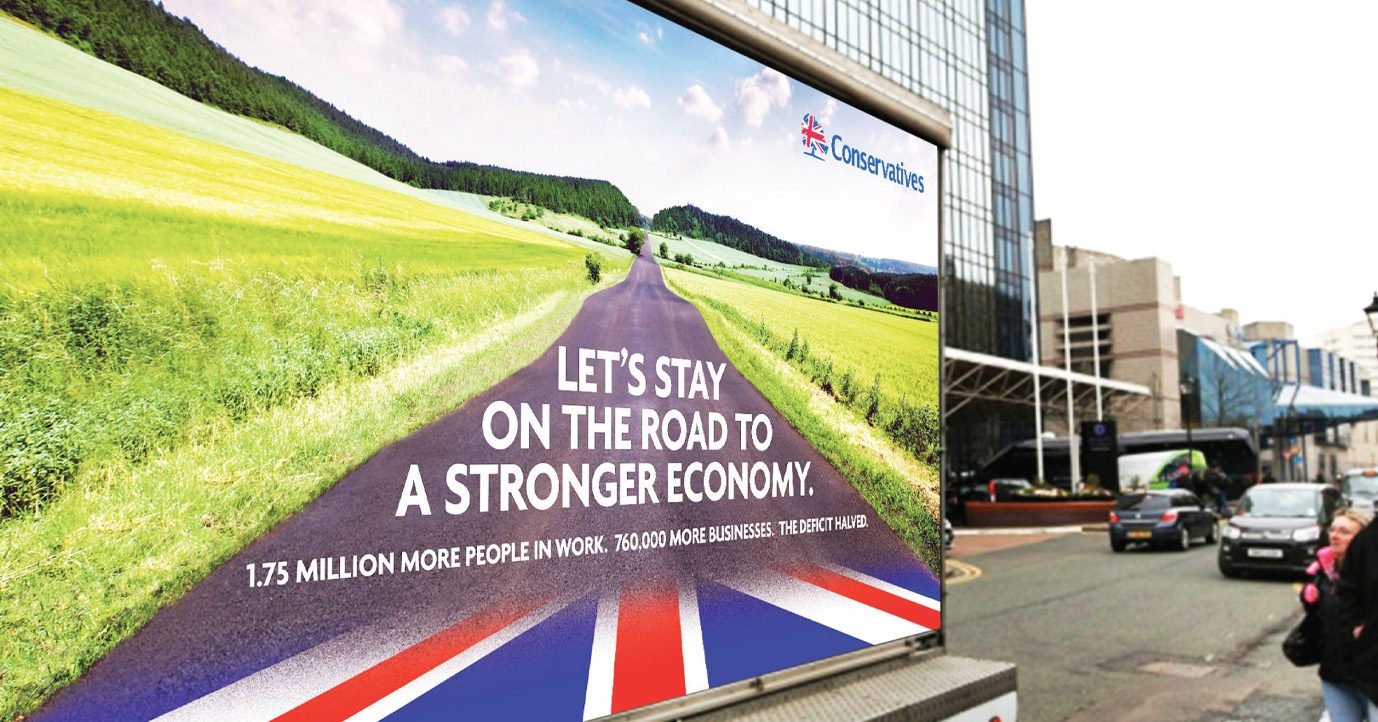
Below is the text of my presentation at the Conservative Party Conference this afternoon setting out my latest research in marginal seats and the Tories’ challenge in building an election-winning coalition of voters. The slides from my presentation are here.
—
Good afternoon and as the proud proprietor of Conservative Home let me add my welcome to this event which is intended to set the scene and explain the public opinion backdrop to our last party conference before the general election.
First it is time to go back to basics, as somebody once said. Since the 7th of May 2010 it has been clear that to win a majority, or probably even to remain the largest party, the Conservatives are going to need more votes at the next election than they received at the last one.
That means that as far as the Tories are concerned there are four types of people.
First we have the Loyalists, who voted Conservative in 2010 and say they would do so again in an election tomorrow. They account for just over one fifth of all voters and are the least likely of any group to say they might change their minds before polling day.
Nearly three quarters say they are satisfied with David Cameron and the rest say they are dissatisfied but prefer him to Ed Miliband. They overwhelmingly say the Conservative Party shares their values and is the most likely to have practical policies that will work in the long run. This is the real core vote and it is not going anywhere.
Then we have the Joiners – people who did not vote Conservative in 2010 but say they would do so in an election tomorrow. They are more likely than average to say they might change their mind before the election, but they all but unanimously prefer Cameron as Prime Minister and trust the Tory team over Miliband and Balls when it comes to managing the economy. They are also more likely than most voters to name the deficit and the debt among the most important issues facing the country.
Next we come to the Defectors – who unfortunately rather outnumber the Joiners. Only 63% of those who voted Conservative in 2010 say they would do so again tomorrow. Just over a quarter say they would vote for a different. Three quarters of them name immigration among the most important issues facing Britain.
Most of them still say they will consider the Tories at the next election, and nearly two thirds say a Conservative government would be their preferred outcome. Only 15% of them would prefer to see Ed Miliband as Prime Minister.
But only a quarter of them say they think the Tories are on the side of people like them, and only just over one in five of them say the Conservatives stand for fairness.
To where have the defectors defected?
Of the 2010 Conservative voters who say they would not vote for the party tomorrow, just over half say they have switched to UKIP – more than four times as many as have gone to Labour.
But more than a fifth say they don’t know how they will vote, and if history is still a useful guide, a good proportion of them will return by election day.
Finally we have the Considerers – people who did not vote Tory in 2010, would not do so tomorrow, but would consider doing so in the future. These people are few and far between but could make all the difference in a close election. They are younger than habitual Conservative voters, more likely to be female and more likely to work in the public sector.
Considerers overwhelmingly prefer Cameron to Miliband and trust the Conservatives on the economy more than Labour. They are also more likely than most people to see the Conservatives as competent and to believe they are willing to take tough decisions for the long term.
But nearly half of them say the NHS is one of the most important issues to them – a higher proportion than among the other groups we have discussed – and when it comes to the NHS they trust Labour. Only one in five of them say the Conservatives stand for fairness and only a quarter say the Tories are on the side of people like them.
Here we see the most powerful factors that separate regular Conservative voters from those who are merely considering voting for the party one day. Nearly half the difference is explained by the fact that Considerers do not think the Tories share their values or are on the side of people like them, or are best when it comes to tackling the cost of living – which is largely a proxy for he extent to which they think the party understands their own circumstances.,
The question of values and whose side the party is on is even more powerful when we look at what differentiates Tory voters and potential Tory voters from those who say they would not even consider supporting the party. What they see as the characteristics of the party are much more powerful in putting people off than specific policy questions.
One of the most striking differences between these groups of potential Conservative voters is their attitude to the economy and the need for austerity.
Nearly nine out of ten Loyalists and Joiners say they are already feeling the benefits of an economic recovery, or that they expect to soon. Most Considerers are also optimistic.
But four in ten Defectors say that not only are they not feeling any better off, but nor do they expect to. UKIP supporters are the most likely of all to think that any recovery will pass them by.
There is a similar pattern when it comes to the need for further austerity. Large majorities of Loyalists and Joiners agree that the economy is not yet full fixed and that austerity and cuts in public spending will need to continue for another five years.
But nearly half of Considerers and Joiners say that austerity is no longer required, or was never needed in the first place. The prospect of more austerity and its potential effects is for many of them the biggest single barrier to their supporting the Tories next year.
Between now and next May, then, for the Tories to stay in government they must build a Coalition of the Willing.
Those who vote Conservative will inevitably have to be prepared to accept further austerity. But they will only vote for it if they believe the results of the policy will be worth waiting for, not just for the country but for themselves and their families.
This may be a tough sell: the Tories will have to find themselves having to explain that the good times are just around the corner and, simultaneously, that things are still so bad that the cuts must continue.
At the same time, many people will need to be reassured of the party’s wider intentions and motives, not least when it comes to the NHS, and that future prosperity will not be confined to the few.
For us in this room, the election now feels as though it is just around the corner. But one piece of encouragement is that as far as most people are concerned, the election might as well be eight years away, never mind eight months. There is still time to change people’s minds.
Those are the arguments that will play out nationally for voters trying to make up their minds. But more than any other recent election, the results in May 2015 will be counted in individual seats.
In the latest round of my polling in the marginals, conducted over the summer, I have returned to perhaps the most intriguing part of the battleground, that involving the Liberal Democrats.
My previous round of polling in Lib Dem territory, published in June, found them very vulnerable in their most marginal seats and unlikely to make any gains. In this round I have therefore included the two Conservative-held seats in which I found the smallest majorities in the last round, plus some Lib Dem seats which constitute more ambitious targets for their opponents. These include majorities of up to 8% against the Conservatives and up to 19% against Labour.
Altogether this round of polling, conducted in the six weeks to the middle of September, includes 22 seats with the usual sample of 1,000 in each seat.
In this part of the Lib Dem-Conservative battleground I found the two parties tied on 32% of the vote. This represents an overall swing to the Tories of just 2% in this selection of seats.
In the five more ambitious Labour targets I found the Lib Dems ten points behind, which means a swing of 12% from the Lib Dems to Labour.
But one thing my battleground polling has shown to date is that we should not expect a uniform swing. This round also shows some intriguing variations from one seat to the next.
And as I never tire of pointing out, this is a snapshot, not a prediction.
If these figures were repeated at the election the Conservatives would be looking at a recount in Torbay, the most ambitious seat on this list, and would gain Berwick Upon Tweed and Taunton Deane, the second and third. They would win Chippenham and Somerton & Frome with swings of 10% and 8.5% respectively, and do enough to bag Solihull, Wells, Mid Dorset & North Poole. They would also just win St Austell & Newquay, where just two points separate the Tories, Lib Dems, and UKIP. The modest 3% swing in North Cornwall would mean another recount.
In the previous round I found the Conservatives just holding on in the three-way marginal of Watford. This time I found Labour two points ahead, with the Lib Dems two points behind the Conservatives in third.
But at the other end of the scale I found swings from the Conservatives to the Lib Dems in Cheadle, Eastleigh, Sutton & Cheam, and most spectacularly, Eastbourne.
The overall 12% swing in the five Labour targets masks a range from 8% in Cambridge and 9% in Bermondsey to 19% in Redcar.
On these results Simon Hughes would hold on, with his majority down from 19% to 1%, with Labour taking the others with margins of between one and twenty-one points. In Redcar the Lib Dems would fall into third place behind UKIP.
These Lib Dem-Labour fights are not simply of academic interest to us. Every seat Labour gain, whichever party they gain it from, makes it harder for the Conservatives to remain the largest party.
Which brings me to the overall state of play on the battleground so far, and why the results in individual seats will have such an impact on the outcome of the election.
This is the state of the parties in the House of Commons today. The Conservatives have 304 seats and Labour have 256. That means the magic number is 47.
If the number of Conservative net losses plus Labour net gains is 47, the two parties will have the same number of seats after the election.
If that number is less than 47, the Conservatives remain the largest party.
If that number is more than 47, Labour become the largest party.
That number is not static. It will change after the two by-elections next week, and if there are any further defections or by-elections in the coming months – but we will take it as a starting point.
In the polling I have done so far, the only gains that currently look likely for the Conservatives would come from the Liberal Democrats. So far I have found eight Lib Dem seats where the Conservatives are ahead. Unfortunately I have also found eight seats which, on current polling, the Lib Dems would lose to Labour.
That leaves no current net advantage to the Tories on the Lib Dem battleground. And to make matters worse, my research has found the Conservatives currently on course to lose two seats to UKIP.
If that situation persists, according to our formula, the Conservatives can afford to lose no more than 22 seats to Labour before they cease to be the largest party in the House of Commons.
Unfortunately, the polling I have already done in individual seats, starting with the most marginal, shows the Tories already behind in 24. This includes Brighton Kemptown, Enfield North and Hastings & Rye, three of the more defensive Conservative seats I am looking at in the round of research which is currently in the field. And the current national polls, as well as the overall swings in the Conservative-Labour battleground I have found so far, suggests the number of losses could extend to the point where Labour have a comfortable working majority.
But rather than make extrapolations from a general swing, which as these results show can be misleading, I am taking a more forensic approach, trying to find exactly how far into the battleground the damage may spread. I want to find where the “bite point” is – the point at which the blue seats consistently start to stay blue.
We have not reached that bite point yet. Perhaps we will find it in the current round of polling, to be published in a few weeks. If you follow me on Twitter and sign up for news alerts at LordAshcroftPolls.com, you will be the first to know.
Thank you very much.


